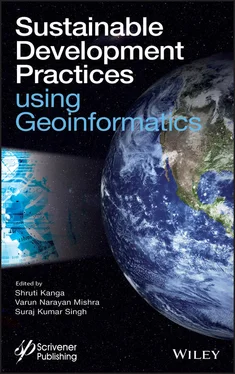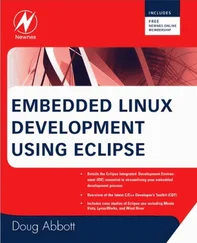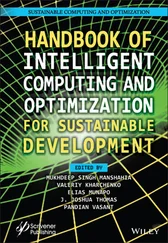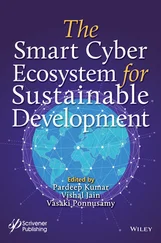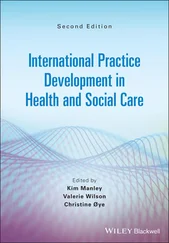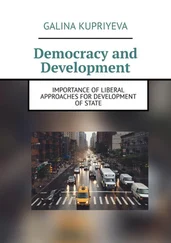1 Cover
2 Title page
3 Copyright
4 Preface
5 Acknowledgement
6 1 The Impact of Rapid Urbanization on Vegetation Cover and Land Surface Temperature in Barasat Municipal Area 1.1 Introduction 1.2 Study Area 1.3 Datasets and Methodology 1.4 Results and Discussion 1.5 Conclusion Acknowledgement References
7 2 Geo-Environmental Hazard Vulnerability and Risk Assessment Over South Karanpura Coalfield Region of India 2.1 Introduction 2.2 Study Area 2.3 Methodology and Data Used 2.4 Result and Discussion 2.5 Conclusion References Appendix: List of Abbreviations
8 3 Bistatic Scatterometer Measurements for Soil Moisture Estimation Using Grid Partition–Based Neuro-Fuzzy Inference System at L-Band 3.1 Introduction 3.2 Methods and Materials 3.3 Result and Discussions 3.4 Conclusions References
9 4 Morphometric Analysis of Tapi Drainage Basin Using Remote Sensing and GIS Techniques 4.1 Introduction 4.2 Study Area 4.3 Methodology 4.4 Results and Discussion 4.5 Conclusion Acknowledgments References
10 5 Efficacy of GOSAT Data for Global Distribution of CO 2Emission 5.1 Introduction 5.2 Monitoring of Greenhouse Gases From Space 5.3 GOSAT Satellite 5.4 Methodology 5.5 Results and Discussion 5.6 Conclusion References
11 6 Development of a Smart Village Through Micro-Level Planning Using Geospatial Techniques—A Case Study of Jangal Aurahi Village of Gorakhpur District 6.1 Introduction 6.2 Study Area 6.3 Data Used and Methodology 6.4 Result and Discussion 6.5 Conclusion References
12 7 Land Appraisal for the Growth of Potato Cultivation: A Study of Sagar Island, India 7.1 Introduction 7.2 Study Area 7.3 Materials and Method 7.4 Results and Discussion 7.5 Conclusions References
13 8 Landslide Vulnerability Mapping Using Geospatial Technology 8.1 Introduction 8.2 Study Area 8.3 Materials and Methods 8.4 Summary References
14 9 Assessment of Impacts of Coal Mining–Induced Subsidence on Native Flora and Native Forest Land: A Brief Review 9.1 Introduction 9.2 Material and Methods 9.3 Conclusions References
15 10 Application of GI Science in Morphometric Analysis: A Case Study of the Gomati River Watershed in District Bageshwar, Uttarakhand 10.1 Introduction 10.2 Study Area 10.3 Materials and Methodology 10.4 Results and Discussion 10.5 Conclusion References
16 11 Water Audit: Sustainable Strategy for Water Resource Assessment and Gap Analysis 11.1 Introduction 11.2 Material and Methodology 11.3 Result 11.4 Conclusions References
17 12 Multi-Temporal Land Use/Land Cover (LULC) Change Analysis Using Remote Sensing and GIS Techniques of Durg Block, Durg District, Chhattisgarh, India 12.1 Introduction 12.2 Study Area 12.3 Materials and Methods 12.4 Result and Discussion 12.5 Conclusion Acknowledgment References
18 13 Climate Vulnerability and Adaption Assessment in Bundelkhand Region, India 13.1 Introduction 13.2 Conclusion References
19 14 Suitable Zone for Sustainable Ground Water Assessment in Dhanbad Block, Jharkhand, India 14.1 Introduction 14.2 Study Area 14.3 Methodology 14.4 Results 14.5 Conclusions References
20 15 Detecting Land Use/Land Cover Change of East and West Kamrup Division of Assam Using Geospatial Techniques 15.1 Introduction 15.2 Study Area 15.3 Materials and Methodology 15.4 Results and Discussion 15.5 Conclusion References
21 16 Climate Resilient Housing—An Alternate Option to Cope with Natural Disasters: A Study in Fani Cyclonic Storm Affected Areas of Odisha 16.1 Introduction 16.2 Study Area and Methodology 16.3 Discussion 16.4 Policy Recommendation References
22 17 Role of Geo-Informatics in Natural Resource Management During Disasters: A Case Study of Gujarat Floods, 2017 17.1 Background 17.2 Flood Preparedness Measures 17.3 Flood Response Measures 17.4 Gujarat Flood Case Study 2017 17.5 Preparedness Measures by State Government 17.6 Media Handling 17.7 Rescue Operation 17.8 Relief Work 17.9 Speedy Restoration of Essential Services 17.10 Use of Drones—New Initiative Adopted References
23 18 Environmental Impacts by the Clustering of Rice Mills, Ernakulam District, Kerala State 18.1 Introduction 18.2 Environmental Pollution and Rice Processing Industries 18.3 Study Area 18.4 Methodology and Review of Literature 18.5 Spatial Distribution of Rice Mill Clustering 18.6 Parboiling Process and Characteristics of Rice Mill Effluents 18.7 Description of Rice Mills Taken for Assessing the Impact on Environment 18.8 First Model Cluster 18.9 Overutilization of Groundwater Resources 18.10 Physio-Chemical Analysis of Rice Mill Effluent From Second Model Cluster 18.11 Conclusion References
24 19 GIS-Based Investigation of Topography, Watershed, and Hydrological Parameters of Wainganga River Basin, Central India 19.1 Introduction 19.2 Study Area 19.3 Methodology 19.4 Results and Discussions 19.5 Conclusion Abbreviations References
25 Index
26 Also of Interest
27 End User License Agreement
1 Chapter 1 Figure 1.1 Location map of Barasat municipality. Figure 1.2 Road and railways network in Barasat municipality. Figure 1.3 Land Use/Land Cover map of Barasat municipality (2001, 2011, and 2017... Figure 1.4 Urban Sprawl pattern from 2001 to 2017. Figure 1.5 (A) The Circular pattern of increasing population from center of the ... Figure 1.6 NDVI images for the year 2001, 2011, and 2017. Figure 1.7 Land Surface Temperature (LST) map for the year 2001, 2011, and 2017. Figure 1.8A The relationship pattern between NDVI and LST from center to outward... Figure 1.8B The relationship pattern between NDVI and LST from center to outward... Figure 1.8C The relationship pattern between NDVI and LST from center to outward... Figure 1.9 Relationship of LST with LULC classes. Figure 1.10 Regression analysis of LST vs. NDVI. Figure 1.11 Urban Heat Island (UHI) formation in Barasat municipality area in th...
2 Chapter 2 Figure 2.1 Location map of the study area showing village boundaries along with ... Figure 2.2 Flow chart of methodology adopted for coal mining risk mapping. Figure 2.3 Map showing spatial distribution of (a) AOT at wavelength of 340nm, (... Figure 2.4 Land use/land cover map of South Karanpura Coalfield region. Figure 2.5 Village-level socio-economic indicators maps of (a) population densit... Figure 2.6 Composite geo-environmental hazard index map of the study area. Figure 2.7 Composite socio-economic vulnerability index map of the study area. Figure 2.8 Showing coal mining risk zone index map of the study area.
3 Chapter 3Figure 3.1 Angular variation of P (dB) at different SM content.Figure 3.2 Membership function plot for Gauss MF with P (dB).Figure 3.3 Plot between experimentally observed and estimated SM for Gauss MF du...
4 Chapter 4Figure 4.1 Location map of the study area.Figure 4.2 Stream order map of study area.Figure 4.3 Digital Elevation Map (DEM) of study area.
5 Chapter 5Figure 5.1 Methodology flow chart for the study.Figure 5.2 Spatial distribution of CO 2concentration from December 2009 to March...Figure 5.3 Spatial distribution of CO 2concentration from December 2016 to Febru...Figure 5.4 Monthly change in CO 2concentration from 2009 to 2020.
6 Chapter 6Figure 6.1 Shows study area where LISS IV and DEIMOS satellite data were used.Figure 6.2 Methodology flow chart for the action plan map preparation.Figure 6.3 Methodology flow chart for the study.Figure 6.4 Infrastructure map.Figure 6.5 Updated cadastral map.Figure 6.6 LU/LC map.Figure 6.7 Soil map.Figure 6.8 Shows action plan map of Jangal Aurahi village of Gorakhpur district.Figure 6.9 Groundwater prospect map.Figure 6.10 LCC map.Figure 6.11 Contour map.Figure 6.12 Geotagged map of amenities.Figure 6.13 Geotagged map of amenities.Figure 6.14 Amenities map.
7 Chapter 7Figure 7.1 Location of the study area.Figure 7.2 Flowchart of the methodology.Figure 7.3 Suitability levels of the six factors.Figure 7.4 Land suitability map for potato cultivation.
Читать дальше
